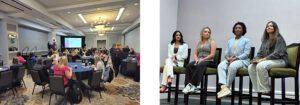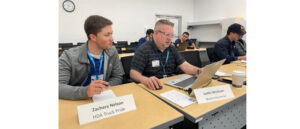Editor’s note: This is the second installment of a two-part series by Dave Schedin, of CompuTrek Automotive Coaching & Training, who has more than 40 years in the automotive field and has coached shops to higher profitability since 2006.
In Part One we reviewed that hiring people is easy — but hiring the “right” people requires diligence and a thorough vetting process. This week we will broaden our understanding of vetting using a tool too few seem to choose, as well as other hiring perspectives and onboarding decisions.

Broaden your perspective — Emboldening your business
In an automotive repair center, a “positional results formula” reveals that not having a top performer in any one position is costing shops, on average, $137,000 in gross profit dollars annually. That’s a significant loss and well worth discussing.
With hiring and onboarding processes these days costing anywhere from $500 to $5,000 or more (assessments, applicant hiring bonus, team onboarding bonuses, background checks, uniforms, etc.), some shop owners are unaware of an even bigger miss — the loss in gross profits. It’s a hard reality to recognize and admit their last hiring decision put them in the need of hiring to once again fill the position, because that last employee missed producing $137,000 or more in GP dollars. Let’s look at the “why” behind that.
Qualify your applicant — but first, a quick word on perspective. For example, decisions are either “subjectively” influenced by personal feelings, etc., or “objective” via the consideration of facts.
As you consider the roles below, try to bring a balance of objective and subjective to create the 360-degree view of your candidate for the position.
Perspectives list:
- Yours. Subjective only. Have you created an “open” perspective of input from others to expand your personal perspective or are you a lone ranger? Openness is choosing to be a better and more bankable you and can give the entire team “buy-in” with new employees.
- Assessment tools. Objective. Provides data and facts. Personality assessments (DISC, etc.), describe character tendencies but may not fully address behaviors that will have a greater impact than personality, more often than not. Job and team “fit” assessments (discussed in Part One), reveal in great length the behavior, thinking and interests pertaining to actually producing results. They will also show how a candidate potentially will interact with the team before they ever meet the team. Job fit assessments have high validity rates. However, assessments in general should only carry one-third weight in the hiring and onboarding decision processes.
- Your team members: Subjective. It is always good to gain the perspective from those who will be working with the new employee. Prep and communicate with your team members. Not an interrogation, but a genuine, healthy interest in the candidate. Let them ask the hard or elephant in the room questions (within the laws of your state), to position you better for the win/win of “fit.”
(Note of caution: The “negative Ned/Nelly” on your team, who typically doesn’t like anybody, will need to be coached in the benefits of being positive. Otherwise, they may cost you a good-to-great hire when the candidate rapidly excuses their application from the hiring process because, in all seriousness, who wants to work in a negative workplace?)
Consider an “onboarding bonus” for the team. For example, if the new hire has worked out as a good employee for a predetermined amount of time, say six, 12 or 18 months, the team can realize a bonus of $200 – $500 or more each. Strategically, from ground zero, when the new employee begins, the team benefits as a whole. Employee turnover costs far out-weigh a bonus like this. (See GP loss above.)
- References: Objective/Subjective. This is a blend perspective. Candidates hope and prepare for positive results from their reference. However, it’s in gaining permission to speak to former employers is where the challenge exists, particularly since defamation of character lawsuits can happen with unfavorable reports from a former boss or manager — even if it’s a true report!
TIP: Here are two questions to ask the references the applicant has given you.
• First, what are two or more great character qualities does your candidate have that they believe would serve the new position well?
• Second, what two or more character qualities are needing improvement to make the candidate successful in the position and how can they be improved.
- Background checks: Objective. Employment history, driver’s abstracts, credit scores, criminal records, medical, fingerprint, international, personal, etc. Not all may apply to you and not all can be done legally in some states prior to an official job offer. Tight discrimination laws can make the first go-round in screening an applicant tenuous. Always check with HR legal counsel how current local, state and federal laws affect the hiring and onboarding processes.
- Social media and internet: Objective. Facebook, Instagram, Twitter, LinkedIn, etc. Social media checks are definitely becoming a more useful tool to locate and view your candidate’s character.
TIP: If you tend to get “lost” in the social media draw or addictivity, choose a more disciplined third party to conduct that search.
- HR and/or business coach: Subjective/Objective. Most automotive repair shops are sans HR departments. Consider hiring an HR coach who utilizes objective tools to gain insight to support you in making the best hiring and onboarding decisions possible. They help craft your processes, so you are not reinventing the wheel of onboarding. CompuTrek has an HR department that offers a guarantee that your candidate will work out over a period of time. Keep in mind: Coaches are not only unbiased in the hiring process, but are on your side and want you to set you up for the win.
Utilize all available perspectives as valuable tools in your hiring and onboarding toolbelt. Eliminate unnecessary and consuming actions that eat up your time by moving straight into pre-hire, high validity assessments in the earliest stages where you can determine a candidate’s level of honesty, integrity, work ethic, reliability, and job fit. Find out how close they are to a “top performer” in any one position before proceeding to profitless steps you may not want to complete with the applicant.
—————————–
Next series from Coach Dave: Auto repair center workflow systems impacting cashflow.
Dave Schedin can be reached at 800-385-0724, dave@computreksystems.com, and www.computreksystems.com. He offers a complimentary 30-minute discussion.





Comments are closed.